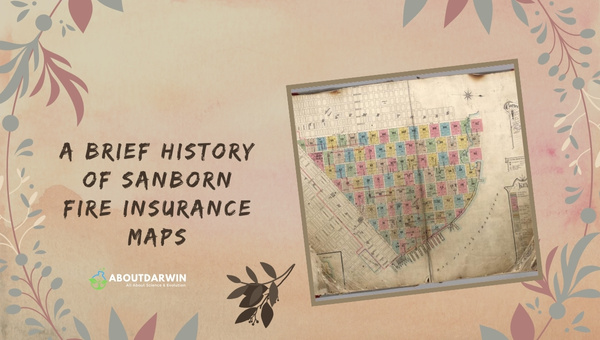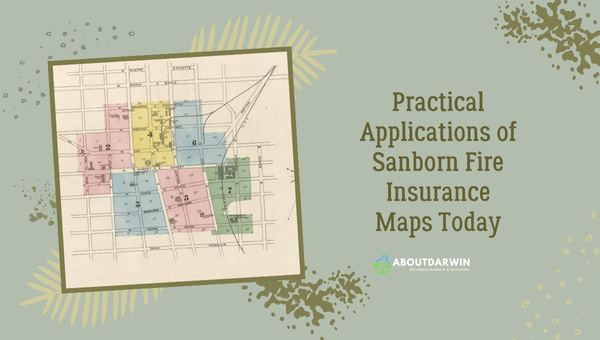Physical Address
304 North Cardinal St.
Dorchester Center, MA 02124
Welcome! If you’ve ever wanted to learn about Sanborn Fire Insurance Maps, you’ve come to the right place. This article promises to take you on a journey through history and urban planning as we unravel the story and significance of these fascinating documents.
We promise it’s not just for insurance enthusiasts or historians – these maps tell us exciting stories about our cities and communities.
Sanborn Fire Insurance Maps are historical documents used primarily by fire insurance companies to determine their liability in urban areas of the United States.
They plot out individual buildings, noting their shape, size, construction materials, and many other features. Crucially, they provide exquisite detail showing the evolution of different neighborhoods over time.
Contents
Sanborn fire insurance maps have long held a timeless place in American history. Named after their creator, D.A. Sanborn, a civil engineer and surveyor, they first appeared in the late 19th century. They were initially designed to help fire insurance companies determine the degree of hazard associated with insuring properties.

The Sanborn Map Company was founded by D.A. Sanborn in 1867, with offices based in New York City. The company’s debut project involved creating an atlas that detailed the fire insurance risks throughout Manhattan due to the rapidly increasing urbanization and industrialization during this era.
Over time, these maps evolved to cover over 12,000 cities and towns across the United States until production officially ended in 1977. Today, these historical documents provide a critical visual record of urban growth and infrastructure development across America.
Sanborn maps serve as a testament to America’s past while also finding relevance today due to their detailed nature, which captures more than just building information.
Overall, the Sanborn Fire Insurance Maps carry a rich history within its detailed sheets that offer a vivid snapshot of America’s past in an easily accessible and understandable format.
Also Read: Unlock DNA Discoveries: Free DNA Upload Websites Guide
The Sanborn Fire Insurance Maps are detailed city plans initially created for assessing fire insurance liabilities in the United States in the late 19th and early 20th centuries. Their incredible attention to detail makes them one of the best historical records of American urbanization.
The characteristics, features, and information contained by these maps can be broadly grouped as follows:
These complete illustrations provide a highly valuable historical snapshot of cities that are unparalleled in their detailing.
Developing a Sanborn Map was an elaborate process that demanded meticulous attention to detail. Below is a brief outline of how they were created:
This intensive creation process resulted in exceptionally comprehensive maps that remain incredibly useful today, even over a century after they were created.
Also Read: Uncovering the Best: GenealogyBank vs Newspapers.com
Sanborn Fire Insurance Maps are both a window into the past and a valuable tool for current urban planning and environmental studies. These intricate maps are filled with significant details and symbols designed to represent key features within city layouts.
However, the sheer volume of information contained can be overwhelming, which is why understanding how to decode symbols and read building footprints is essential to maximize their use.
Sanborn maps use a wide array of symbols, patterns, colors, and abbreviations to convey detailed information about specific buildings or city blocks. Here’s how some of the main elements can be deciphered:
It cannot be stressed enough that developing familiarity with these codes greatly enhances your knowledge of historical urban landscapes.
The overall shape of each building – its footprint – encapsulates extensive data, including its layout and structural features such as staircases or windows. Here’s how you could interpret footprints:
Recognizing these elements when reading Sanborn Fire Insurance Maps is instrumental in revealing the history embedded in their rich detailing. The plethora of information captured in these maps is truly an enduring legacy of our past and a guiding light for future urban development initiatives.
Also Read: Haemolysis in Streptococci: Types and Health Impact
Sanborn Fire Insurance Maps not only provide a snapshot of the past, but they also serve vital roles in modern times.

Two significant areas where these maps find relevance today are urban planning and environmental studies.
Historical documents such as the Sanborn Fire Insurance Maps offer invaluable insights for urban planners and developers. These maps help professionals comprehend an area’s development over time and understand changes in landscapes, infrastructure, and demographics.
Another application of these highly detailed maps is their usage in environmental studies. They play an essential role in assessing natural shifts and human-influenced landscape modifications.
The primary vital function that stands out from the above uses is informative-based decision-making capacity that provides relevancy to Sanborn Fire Insurance Maps in contemporary scenarios, too.
They are not just historical records but guiding tools that aid in developing urban landscapes sustainably and understanding the changing facets of environmental scenes cohesively.
The oldest known Sanborn map dates back to 1866.
While initially created for insurance companies, today, many Sanborn maps are digitized and accessible to the public for research purposes and historical interest.
These maps capture a plethora of information like building materials, heights, function of structures, locations of windows and doors, and even the locations of fire hydrants.
Modern digital GIS (Geographic Information System) data serves similar purposes but with enhanced capabilities due to technological progression.
Also Read: GenomicsEducation Merger: Now Part of GenealogyExplained
Sanborn Fire Insurance Maps occupy a pivotal role in our understanding of urban landscapes, city histories, and environmental changes. Enriched with remarkable attention to detail, these maps have transcended their initial utility beyond assessing fire insurance liabilities.
Today, they are valued for their rich content in various disciplines like urban planning and environmental studies. The elements featured on these maps – from building footprints to symbols – encapsulate the essence of cities at different points in time while providing invaluable insights into land use patterns and architectural trends.
They, therefore, prove tremendously useful not just for historians and researchers but also for urban planners, architects, and other professionals who strive to harness this enriched source of historical inquiry.